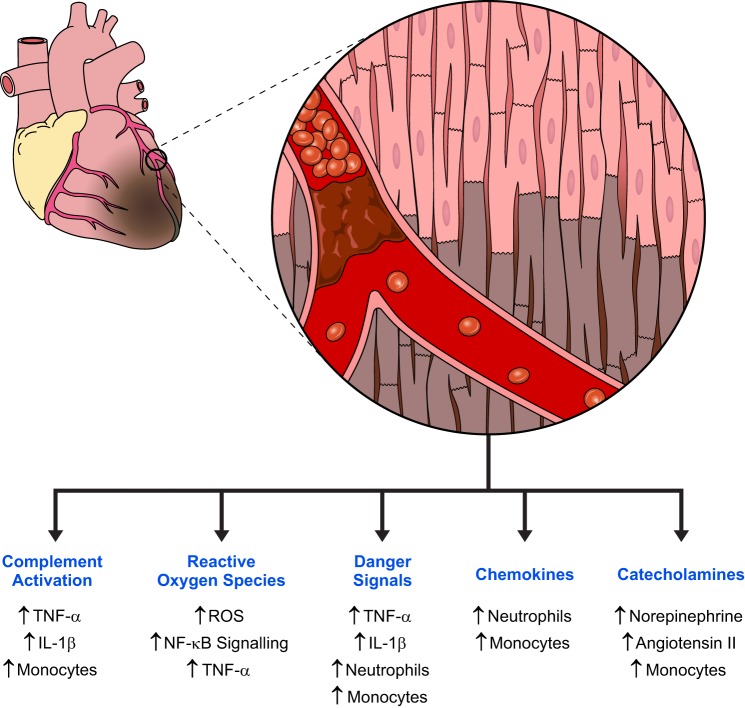Fig. 1.
Overview of inflammatory contributors after acute myocardial infarction. Acute occlusion of epicardial coronary arteries leads to massive cell death within hours of plaque rupture. This triggers multiple signaling pathway activations through innate immune system mechanisms, release of reactive oxygen species (ROS), and systemic neurohormonal signaling. These pathways ultimately result in the release of proinflammatory cytokines and recruitment of cellular mediators of inflammation, such as neutrophils and monocytes. These mediators are critical for sustaining an inflammatory response and eventual healing of the infarcted myocardium.

